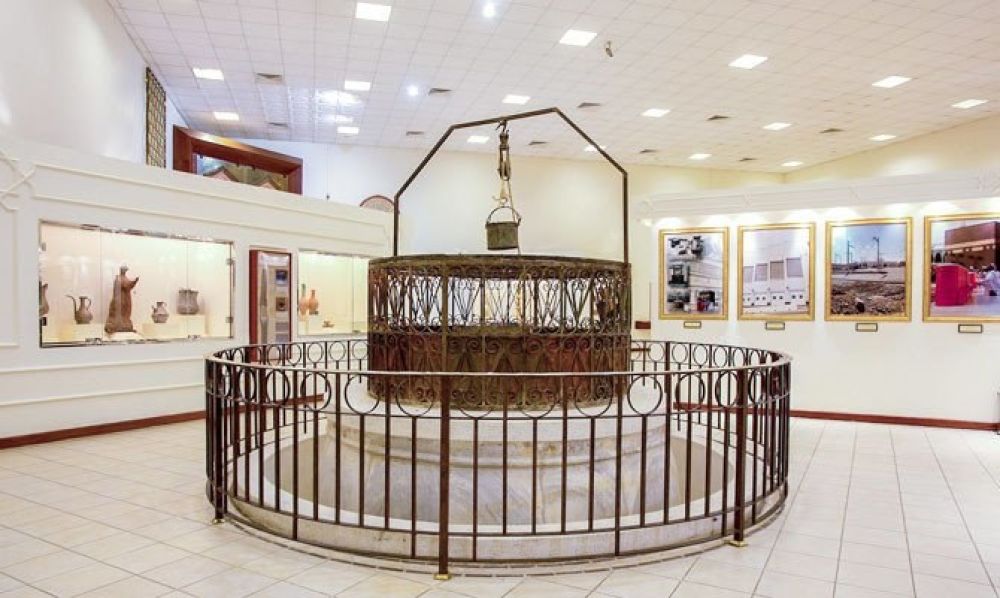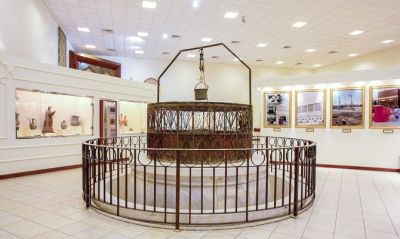

The Zamzam Well is located within the Masjid al-Haram in Mecca, Saudi Arabia, and is among the most sacred sites in Islam. Pilgrims visiting the holy site often partake in collecting Zamzam water, believed to be blessed and have healing properties. Visitors can fill containers with water directly from the numerous taps surrounding the well's enclosure. This water is not for sale and is provided freely for personal use, reflecting its spiritual significance. The process of collecting Zamzam water requires patience and reverence, as the area can become crowded, especially during peak seasons. Devotees usually perform ablution with the water or drink it with the intention of seeking blessings and spiritual purification.
Praying at the Masjid al-Haram, where the Zamzam Well is situated, is a deeply spiritual experience for Muslims. The mosque is the holiest site in Islam, as it surrounds the Kaaba, towards which Muslims around the world direct their prayers. Worshippers engage in obligatory prayers, optional 'nafl' prayers, and can perform the 'Umrah' pilgrimage ritual at any time of the year. The reward for prayers in this mosque is said to be magnified multifold compared to prayers offered elsewhere. Many visitors take the opportunity to pray as much as possible during their stay, seeking spiritual rewards and a sense of connection with the divine.
Performing Tawaf is a central ritual for those visiting the Masjid al-Haram where the Kaaba and Zamzam Well are located. Tawaf involves walking around the Kaaba seven times counterclockwise, starting from the Black Stone (Hajar al-Aswad). It is an act of worship that symbolizes unity and the belief in one God, as pilgrims from around the world gather together in a harmonious motion. Each circuit is approximately 40-47 meters long, with each Tawaf taking about 30 minutes to complete, depending on the crowd. The Tawaf can be more crowded during Hajj season, thus extending the duration. This activity is imbued with profound spiritual significance, and many pilgrims find it an incredibly moving part of their pilgrimage.
An activity inherent to the pilgrimage experience is drinking the Zamzam water, which is considered a sacred and healing liquid in Islamic tradition. Pilgrims often drink the water with the intention of seeking blessings, health, and fulfillment of their prayers. According to Islamic tradition, the Zamzam well was miraculously provided for Hagar and her son Ishmael as they dwelled in the desert. Drinking this water is a moment of reflection and gratitude for many pilgrims, who often collect the water to bring back home to their loved ones. Drinking the water is a simple yet profound act that connects visitors to the history and spiritual legacy of Mecca.
Sa'i is another significant ritual performed by those visiting the Masjid al-Haram, which includes the act of walking seven times between the hillocks of Safa and Marwah. This ritual replicates the search for water by Hagar, the mother of the Prophet Ishmael, after they were left in the desert. It commemorates her faith and God's mercy in providing the Zamzam well. The space between these two hills is a large, air-conditioned gallery, and the distance for one single trip is approximately 450 meters, with the entire seven laps summing up to about 3.15 kilometers. This ritual underscores the themes of faith, perseverance, and God's providence that are central to the pilgrimage experience.
Away from the immediate vicinity of the Zamzam Well, pilgrims and tourists can visit the Exhibition of the Two Holy Mosques Architecture. This facility provides insights into the historical development and expansion of the Masjid al-Haram and the Masjid an-Nabawi in Medina. It showcases models, photographs, and manuscripts that reflect the architectural and spiritual evolution of these sacred sites over the centuries. The exhibit includes a section on the Zamzam well, detailing its history and importance to pilgrims. Knowledgeable guides offer tours in various languages, enhancing the educational experience of visitors.
Various spiritual lectures and classes are held in the proximity of the Masjid al-Haram, providing pilgrims with an opportunity to deepen their understanding of Islamic teachings. These sessions are conducted by respected scholars and cover a range of topics, including the significance of the Zamzam Well, principles of the Islamic faith, and the rituals of Hajj and Umrah. Visitors can benefit from these enriching experiences which offer insights into the practices and history of the pilgrimage. The lectures are usually free of charge and can be a profoundly impactful part of the visitor's spiritual journey.
Observing the fast and subsequently breaking it with iftar during Ramadan is a special experience at the Masjid al-Haram. The mosque hosts communal iftar gatherings where dates and Zamzam water are provided to the public to break their fast, followed by a meal. Participating in iftar amidst the congregation of pilgrims from all corners of the globe reinforces a sense of unity and brotherhood. Iftar is hosted daily during the month of Ramadan and delivers not only physical nourishment but also profound spiritual satisfaction upon completing a day of fasting in one of Islam's holiest sites.
Salat al-Taraweeh is a special prayer performed during the nights of Ramadan. Experiencing Taraweeh at the Masjid al-Haram carries immense significance, as the mosque fills with thousands of worshippers engaging in extended prayers. The atmosphere is electric with the recitation of the Quran echoing throughout the vast prayer hall. Taraweeh provides an opportunity for spiritual reflection and renewal, as the congregation stands in prayer together. The number of Taraweeh prayers can vary, with some opting to perform 8 and others 20. The duration also varies, lasting several hours into the night.
Mecca is a city of great historical and spiritual significance, and visitors can take guided tours to explore various sites beyond the Masjid al-Haram. While the Zamzam Well itself is not open for touristic visits, the areas around it, such as the Birthplace of the Prophet Muhammad at the Library of Al-Maktaba Al-Shameela, the Jabal al-Nour that houses the Cave of Hira, and the Jannat al-Mu'alla cemetery, are among the locations one can visit. Tours allow visitors to connect with the rich Islamic history, understand the context of the emergence of Islam, and appreciate the legacy that underpins the faith. These can be deeply enriching experiences that complement the visit to the Zamzam Well and surrounding holy places.
